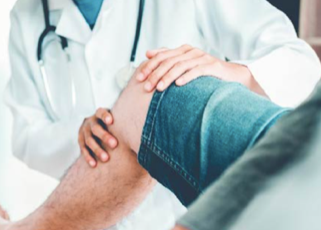07 2222 3333
info@email.com.au
Enhanced Recovery for Hip and Knee Joint Replacement
Dr Agolley and his team are committed to providing best patient outcomes and highest-quality care whilst promoting minimal disruption to your life.
Dr Agolley utilises enhanced recovery protocols for joint replacement surgeries, such as total hip or knee replacement that allow for faster recovery and reduced length of hospital stay. The goal being to help you return to your normal activities as soon as possible after joint replacement surgery.
State of the art robotic and computer navigation techniques and minimally invasive approaches for total hip and knee replacement surgery are used to provide the best surgical outcomes for his patients. Dr Agolley and his team use multimodal pain management protocols that ensure a smoother and faster recovery process.
What to Expect
Before your surgery, you will undergo a thorough pre-operative assessment to ensure you are ready for the procedure. We provide detailed pre-surgical education to inform you about the surgery and recovery process, along with guidance on what to bring and how to prepare.
During the surgery,
Dr Agolley utilises minimally invasive techniques, which involve smaller incisions (Direct Anterior Approach) and advanced methods to reduce recovery time. Dr Agolley specialises in robotic assisted joint replacement surgery utilising cutting edge technology for both hip and knee joint replacement surgery. Preoperative CT scan and/or x-rays are utilised to plan personalised outcomes to improve implant positioning, patient satisfaction and recovery from joint replacement surgery. Our anaesthesia plans are designed to enhance comfort and minimise side effects.
After the surgery,
early mobilisation is encouraged to promote quick recovery. We implement multimodal pain relief strategies to manage discomfort effectively to help you get up and around. Discharge planning includes clear instructions and support to ensure a smooth transition back home.
Benefits of Multimodal Anaesthesia
Multimodal anaesthesia aims to address pain through different pathways, leading to improved pain control and fewer side effects. By combining multiple analgesic methods, we can effectively manage pain while minimising the reliance on opioids. This approach not only enhances comfort allowing for improved mobilisation but also reduces the risk of opioid-related complications (e.g. minimal to no nausea) and promotes a smoother recovery.
1
Components of Our Multimodal Anaesthesia Approach
Before the surgery, our team conducts a thorough assessment to determine the most effective combination of pain management techniques tailored to your specific needs. This preparation includes educating you about the planned anaesthesia methods and setting realistic expectations for your surgery and recovery.
During the joint replacement procedure, we integrate various analgesic methods, such as non-steroidal anti-inflammatory drugs (NSAIDs), paracetamol, and, when necessary, low-dose opioids. Regional anaesthesia techniques, like nerve blocks or spinal anaesthesia, are employed to provide targeted pain relief and reduce overall discomfort.
2
Our anaesthesia team continuously monitors your condition throughout the surgery to ensure optimal pain management and adjust medications as needed. By employing advanced monitoring techniques and personalised anaesthesia plans, we aim to enhance your safety and comfort.
Following the surgery, our pain management strategy includes a continuation of NSAIDs and paracetamol to manage pain effectively while reducing the need for opioids. Patient-controlled analgesia (PCA) may be used to allow you to manage your own pain relief within controlled limits. Regional anaesthesia techniques such as nerve blocks that utilise local anaesthetic, are maintained to provide extended pain relief.
Patient Centered Care
Patients who have undergone joint replacement with our multimodal anaesthesia approach often highlight their positive experiences. Our goal is to make sure you feel informed and confident about your treatment options. If you have any questions or would like to schedule a consultation, please contact our office. Our team is here to support you and provide you with the highest quality care.
References
1 Lewis, Cynthia; Gunta, Kathleen; Mitchell, Kimberly; Bobay, Kathleen. Effectiveness of Multimodal Pain Management Protocol in Total Knee Arthroplasty Patients. Orthopaedic Nursing 31(3):p 153-159, May/June 2012. | DOI: 10.1097/NOR.0b013e3182558d0b
2 Eric S Schwenk, Edward R Mariano Multimodal Anaesthesia: the Foundation of Successful Perioperative Experience, Anaesthesiology News October 25, 2019
Opening Hours
- Monday
- -
- Tuesday
- -
- Wednesday
- -
- Thursday
- -
- Friday
- -
- Saturday
- Closed
- Sunday
- Closed
All hours listed in Queensland time.
Key Links
Copyright Dr David Agolley

